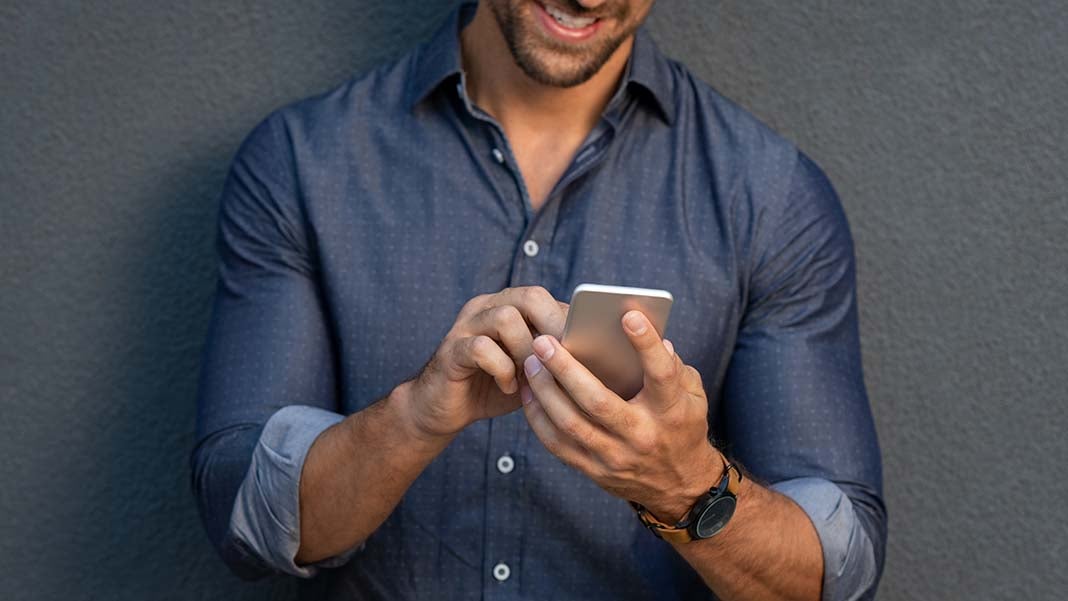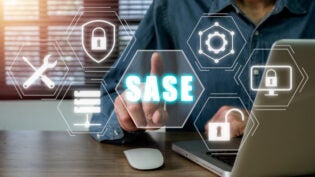
The mobile phone has evolved to become one of the most frequently used technological devices in the modern era. As individuals, our use of mobile phones touches nearly every aspect of our daily lives. It’s a communication device, a media device, an internet browser, a source of entertainment, a purchaser of goods and services—the list goes on.
The versatility of our phones is a great thing, but it has also increased our dependence on them which, in turn, exposes us to some of their vulnerabilities. Practicing strong cyber security is the best way to keep yourself protected from these risks so we thought we’d share a few tips to help you protect your mobile phone.
1. Set up your screen lock immediately
The first thing you should do whenever you get a new phone is to set up a screen lock. This seems like an obvious step but you’d be surprised how often it’s overlooked or how long it takes for people to do. If you happen to misplace your phone before doing so, an opportunist who happens to come across it could easily take advantage.
These days, there are a number of different methods to lock your phone including pin, pattern, fingerprint, iris scanning and facial recognition. There are even things like Intelligent Scan (used by Samsung) that chooses between facial and iris recognition depending on the conditions around you.
It’s also important to make sure your phone has its auto-lock feature enabled. Android phones typically have this setup to activate 5 seconds after sleep mode kicks in while an iPhone does this after 2 minutes (but can be changed to 30 seconds which we recommend).
2. Install antivirus software
While most people protect their desktops and laptops with antivirus software, very few do so with their mobile phones. When you consider how much web browsing is now done on our mobiles, failing to protect in the same way you would your laptop makes little sense.
This is especially important if you do a lot of travelling, connecting to public WiFi networks which are particularly susceptible to intrusion by way of malware (more on this later). If you’ve got kids using the phone it also gives them an extra layer of protection too.
There’s a wide range of mobile antivirus apps that you can download, many of which are free and will have minimal system impact on your operating system.
3. Keep your operating system (OS) updated
Hackers are constantly looking for security vulnerabilities through a phone’s operating system and the complexities of system programming mean there are always some to be found.
Android and Google commit a huge amount of resource in identifying these vulnerabilities and developing security patches and fixes to eliminate them. Making sure you find time to install these updates as and when they become available is therefore critical to keeping your system secure.
Another good reason to keep your OS updated is that these patches not only fix security vulnerabilities but also often add new features to your phone too.
4. Back up your data
Given how much important personal data is now stored on our phones, it’s important to keep a backup of your data, should it for some reason be lost. As a matter of fact, best practice typically advises that you back up your data in multiple ways.
One of these ways is to put your data onto a physical storage device like a portable hard drive or a flash drive. This is a quick and easy solution and as you’ll more than likely place these in your cupboard once the files are transferred, they can’t themselves be attacked by hackers.
Another increasingly popular way to back up your data is to do so via the Cloud. You can set this up to do it automatically on an iPhone using iCloud and via Google on Android. The main advantage of doing this is that you can access your data no matter where you are, so long as you can connect to the internet and you can’t lose your data through destruction of property, both of which are limitations/risks of the physical storage solution.
5. Be selective with apps
There are literally millions of apps available to download on both Android and iPhone adding a whole range of new functions, services and capabilities to your phone.
While many of them are legitimate and help you get the most out of your phone, there are those that are more vulnerable to cyber security threats than others. These are predominantly apps that are downloaded outside the App Store or Google Play Store that don’t get vetted and scanned for threats by the respective tech giants.
Unfortunately, creating apps that are actually disguised vehicles for distributing malware is an all too common strategy for hackers and for the most part, the risks and repercussions are all too grave.
Even legitimate apps require a certain degree of vigilance with respect to checking the permissions required for use (some might want more than you’re willing to give) and regular updating to make sure security bugs are fixed. All things considered, you can never be too picky when it comes to which apps you choose to install.
6. Don’t trust untrusted networks
As briefly mentioned earlier, if you’re a regular traveler or someone that frequently connects to public WiFi networks, you should be extremely careful how you use your phones when connected.
The risk with public networks is that hackers can interrupt your connection and gain access to the information you are sending out. For this reason, you should be hesitant in fully trusting the integrity of your connection when on these networks and limit exactly what you are doing while connected.
Things to shy away from includes online shopping, internet banking and anything to do with activities that contain your account details. You might also be wary about logging into things like email and social media accounts and should always make sure you are logged out of personal accounts before connecting to these networks.
7. Docking stations are now also a risk
A more recent risk that has revealed itself is through public USB docking stations/charging ports that you commonly find in cafes, hotels, airports etc. These have, in the past, been greeted with glee by mobile phone users, low on battery and desperate for a recharge.
The threat they pose has now been described as “juice jacking.” This is where hackers manipulate a docking station/charging port and upload malware which then gets passed onto an unsuspecting device that subsequently connects to it.
USB cables have become synonymous with the act of power charging and it’s easy to forget that they also have data wires that can transfer files too. You can get USB attachments that will block the data ports to protect against this threat or you can carry portable chargers or just use your AC adapter when in need.
8. Workplace responsibility essential
While cyber security for one’s personal mobile is an individual responsibility, it is an important corporate responsibility for businesses where mobile phones are used by employees as part of their work. This is not only to protect the personal information of the employee but the company’s data as well.
A good way employers can do this is by using an enterprise mobile device management (MDM) application which can be installed on a company mobile or a personal device (if the employee is using their own for work). An MDM application will add many layers of protection, like strong data encryption and remote access to the device for IT teams should this be required.
Another added benefit is that it’s also a good tool to increase cyber security awareness for employees, as they bring to the fore specific behaviors and actions that should be practiced and avoided.
Some important cyber security tips for your mobile
As you can see there are some important steps to follow to ensure your mobile is as safe as it can be from today’s cyber security threats. The good news is they are all relatively easy to incorporate into your daily habits in protecting your phone.
2788 Views












